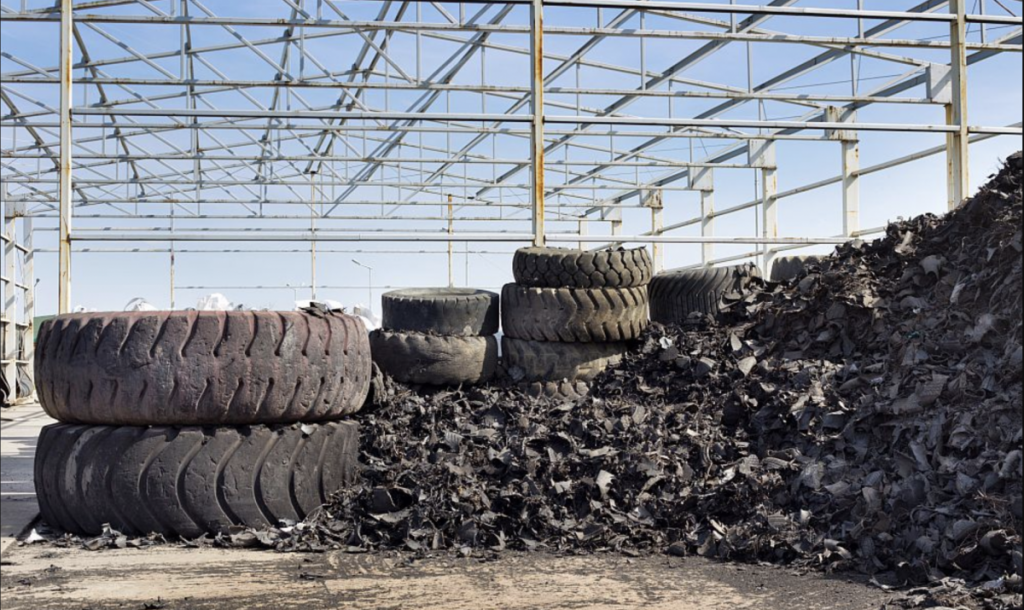The automotive industry needs transformative change in its technology solutions. It has made progress producing zero-emission electric vehicles by reducing the carbon footprint on the user-end, but the manufacturing process still has a significant environmental impact. From the plant’s electricity consumption to the various materials in the car’s production, the automotive industry has startling statistics.
According to The Guardian, a compact car will produce around 6 tonnes of CO2e during its production lifecycle. And a university publication concluded that the largest share of global greenhouse gas emissions comes from energy consumption (73.2%), where the industrial sector is a major contributor.
Technology is the answer. Pyrolysis can help in closing the loop to make the automotive sector circular, reducing its environmental impact during car production.
Benefits of joining the circular economy
Employing circular methods would allow the automotive industry to reduce vehicle lifecycle carbon emissions by up to 75% and resource use by up to 80% per passenger-km by 2030 for an electric car, according to a World Economic Forum report from Accenture. Closing the loop will also reduce the industry’s ecological footprint by reducing pollution and waste generation and protecting biodiversity. The automotive supply chain will have to change both upstream and downstream to achieve these goals.
Pyrolysis is a thermochemical technique for recovering raw materials from waste, and can be used to safely recycle end-of-life tyres
Tyres, which are a source of recurring waste , can be critical to the industry’s circularity. Tyres pollute the environment throughout their lifecycle, from the non-renewable fossil fuels used in manufacturing to the difficulty of recycling waste tyres by conventional methods. Tyre components like synthetic rubber and virgin Carbon Black are derived from petroleum. Carbon Black makes up over 20% of tyre mass; synthetic rubber content can be up to 25% depending on the type, as truck tyres have less.
However, the automotive industry can use existing technologies from other sectors, like pyrolysis, to avoid starting from scratch in its search for circularity. Pyrolysis is a thermochemical technique for recovering raw materials from waste, and can be used to safely recycle end-of-life tyres (ELTs). Raw materials recovered during the pyrolysis process can be used to manufacture new tyres, thus closing the loop for the tyre industry.
Material recovery by pyrolysis
Several types of pyrolysis for ELTs are now available. Essentially, they all heat ELTs at high temperatures, in an oxygen-free atmosphere, to break down the tyres to their raw materials. The pyrolytic products of economic interest are recovered Carbon Black, steel, oil, and gas.
Recovered Carbon Black is semi-reinforcing and can partly replace grades like N660. Recovered Carbon Black carbon footprint is several times lower than virgin Carbon Black. The tyre-derived oil (TDO) is a suitable feedstock alternative to fossil fuels for manufacturing reinforcing virgin Carbon Black grades. It can also be used as a chemical feedstock. The recovered steel can be reused in manufacturing tyres too. The recovered gas can fuel industrial plants, making energy processes circular and limiting their carbon footprints.

Although there are many methods for recycling ELTs, pyrolysis is the best option for implementing closed loop economics in the tyre industry. Also, pyrolysis is the most environmentally-friendly tyre recycling method. It can treat 100% of tyre waste, recover 85% of materials, and the technology produces negligible emissions and waste.
Pyrolysis in Europe today
At present, there are only a few operational pyrolysis plants in Europe. There are different technologies in varying development phases and the quality of products is being stabilised.
There currently isn’t enough supply of pyrolytic recycled products to meet the demand as major tyre producers attempt to replace fossil-based components with sustainable alternatives and cut emissions by 2050. That is why the pyrolysis industry is expected to grow rapidly in the upcoming years. Pyrolysis can also support the automotive industry’s need to meet its producer responsibilities of tackling the greater tyre waste problem.
Pyrolysis is a circular solution, and the automotive industry needs similar sustainable opportunities in the entire vehicle manufacturing process to join the circular economy.
The opinions expressed here are those of the author and do not necessarily reflect the positions of Automotive World Ltd.
Krzysztof Wróblewski is Chief Executive at Contec
The Automotive World Comment column is open to automotive industry decision makers and influencers. If you would like to contribute a Comment article, please contact editorial@automotiveworld.com

